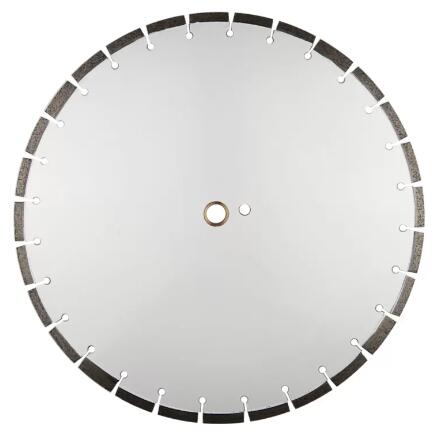Summary of diamond saw blade cutting methods
Sep. 18, 2024
Diamond saw blade is a cutting tool widely used in the processing of hard and brittle materials such as concrete, refractory materials, stone, ceramics, etc.
Diamond saw blades have high hardness and high strength, and their manufacturing cost is also very high. The main reason is that the price of diamond blades is expensive, and the second is that the material requirements of the saw blade base are high, so its high manufacturing cost leads to high prices of diamond saw blades.
However, precisely because of the sharp and durable characteristics of diamond saw blades, and as the manufacturing technology of diamond saw blades becomes more and more mature, it is increasingly recognized and accepted by consumers. There are more and more consumers using diamond saw blades. Then, many workers in many companies only know how to use diamond saw blades, but do not pay attention to the maintenance of diamond saw blades. Some even know nothing about the maintenance methods of diamond saw blades, which leads to a significant reduction in the service life of diamond saw blades, and they cannot play their sharp and durable cost-effectiveness. Next, I will share with you the maintenance methods of diamond saw blades after use.
How to maintain diamond saw blades?
1 If the diamond saw blade is not used immediately, it should be laid flat or hung up using the inner hole. Other items should not be piled on the flat diamond saw blade or stepped on, and attention should be paid to moisture and rust prevention.
2 When the diamond saw blade is no longer sharp and the cutting surface is rough, it must be removed from the saw table in time and sent to the diamond saw blade manufacturer for re-grinding (Kuai Wushuang diamond saw blade can be repeatedly sharpened 4 to 8 times, with a maximum service life of more than 4,000 hours). Diamond saw blades are high-speed cutting tools, and their requirements for dynamic balance are quite high. Please do not hand over diamond saw blades to non-professional manufacturers for grinding. Grinding cannot change the original angle and destroy dynamic balance.

3 The inner diameter correction and positioning hole processing of diamond saw blades must be carried out by the manufacturer. If the processing is poor, it will affect the use of the product and may be dangerous. In principle, the hole expansion should not exceed the original hole diameter of 20mm to avoid affecting the balance of stress.
Further reading:Tools
Why Are Electric Leaf Blowers Gaining Popularity?
what are angle grinders used for
During the sawing process of the diamond cutting saw blade, the saw blade runs at high speed, and friction and wear occur between the saw blade base and the cuttings flow. Since the radial wear and lateral wear of the segment are inconsistent, when the segment working layer is about to be consumed, the friction between the diamond saw blade matrix and the rock chips increases, causing "saw clamping", which will cause wear and deformation of the saw blade matrix and reduce the number of times the matrix can be reused.
1. Use electric welding to weld hard particles on the diamond saw blade matrix in a uniform distribution in the circumferential direction and staggered distribution in the radial direction.
This method can reduce the wear of the rock cutting flow on the side of the matrix, but it will increase the manufacturing cost of the matrix and the difficulty of correcting the deformation of the matrix.
2. Use low-temperature spraying to spray a layer of spraying layer with WC-Co as the main component on the side of the diamond saw blade matrix. This method can prevent side wear and improve the rigidity of the saw blade.
3. When repairing asphalt and concrete pavements, it is sometimes necessary to cut deep and wide slots. The diamond saw blade used can be made of refined iron-based plugs and diamond segments sintered into one, and then inserted and welded to the saw blade matrix.
It is more flexible when sawing sawtooth or non-uniform width slots, which can greatly reduce the heat generated by the friction between the node block and the substrate during sawing and the heat conducted to the substrate, avoiding thermal deformation of the substrate and premature failure.Learn more
137
0
0
All Comments (0)
If you are interested in sending in a Guest Blogger Submission,welcome to write for us!


Comments